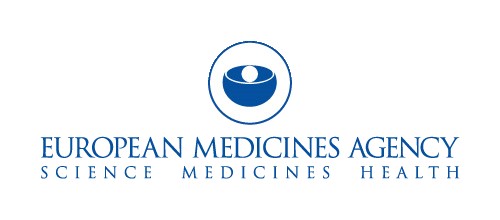EMA finds no evidence linking viral vector in Zynteglo to blood cancer.
| EMA’s safety committee (PRAC) has concluded that there is no evidence Zynteglo causes a blood cancer known as acute myeloid leukaemia (AML).
Zynteglo, a gene therapy for the blood disorder beta thalassaemia, uses a viral vector (or modified virus) to deliver a working gene into the patient’s blood cells. The PRAC reviewed two cases of AML in patients treated with an investigational medicine, bb1111, in a clinical trial for sickle cell disease. Although there have been no reports of AML with Zynteglo, both medicines use the same viral vector and there was a concern that the vector may be implicated in the development of the cancer (insertional oncogenesis). The review found that the viral vector was unlikely to be the cause. In one of the patients, the viral vector was not present in the cancer cells, and in the other patient it was present at a site (VAMP4) that does not appear to be involved in cancer development. After examining all the evidence, the PRAC concluded that more plausible explanations for the AML cases included the conditioning treatment the patients received to clear out bone marrow cells and the higher risk of blood cancer in people with sickle cell disease. More information is available in EMA’s public health communication.
Possible link to very rare cases of myocarditis and pericarditis with mRNA COVID-19 vaccines The PRAC has concluded that myocarditis and pericarditis can occur in very rare cases following vaccination with Comirnaty and Spikevax (previously known as COVID-19 Vaccine Moderna). The Committee is therefore recommending listing myocarditis and pericarditis as new side effects in the product information for these vaccines, together with a warning to raise awareness among healthcare professionals and people taking these vaccines. Myocarditis and pericarditis are inflammatory conditions of the heart. Symptoms can vary but often include breathlessness, a forceful heartbeat that may be irregular (palpitations), and chest pain. In reaching its conclusion, the Committee took into consideration all currently available evidence. This included an in-depth review of 145 cases of myocarditis in the European Economic Area (EEA) among people who received Comirnaty and 19 cases among people who received Spikevax. PRAC also reviewed reports of 138 cases of pericarditis following the use of Comirnaty and 19 cases following the use of Spikevax. As of 31 May 2021, around 177 million doses of Comirnaty and 20 million doses of Spikevax had been given in the EEA. In addition, the PRAC also looked into cases received worldwide. More information is available in EMA’s public health communication. The content of a direct communication to healthcare professionals is described further in the section ’New safety information for healthcare professionals’.
EMA advises against use of COVID-19 Vaccine Janssen in people with history of capillary leak syndrome The PRAC has recommended that people who have previously had capillary leak syndrome must not be vaccinated with COVID-19 Vaccine Janssen. The Committee also recommended that capillary leak syndrome should be added to the product information as a new side effect of the vaccine, together with a warning to raise awareness among healthcare professionals and patients of this risk. The Committee reviewed three cases of capillary leak syndrome in people who had received COVID-19 Vaccine Janssen, which occurred within two days of vaccination. One of those affected had a history of capillary leak syndrome and two of them subsequently died. As of 21 June 2021, more than 18 million doses of COVID-19 Vaccine Janssen had been administered worldwide. Capillary leak syndrome is a very rare, serious condition that causes fluid leakage from small blood vessels (capillaries), resulting in swelling mainly in the arms and legs, low blood pressure, thickening of the blood and low blood levels of albumin (an important blood protein). Healthcare professionals should be aware of the signs and symptoms of capillary leak syndrome and of its risk of recurrence in people who have previously been diagnosed with the condition. The recommendations are described further in the section ’New safety information for healthcare professionals’. The PRAC will continue to monitor for cases of the condition and will take any further actions necessary. For more information see EMA’s public health communication.
Vaxzevria: warning for Guillain-Barre syndrome The PRAC has recommended a change to the product information for Vaxzevria (formerly COVID-19 Vaccine Astrazeneca) to include a warning to raise awareness among healthcare professionals and people taking the vaccine of cases of Guillain-Barre syndrome (GBS) reported following vaccination. GBS is an immune system disorder that causes nerve inflammation and can result in pain, numbness, muscle weakness and difficulty walking. GBS was identified during the marketing authorisation process as a possible adverse event requiring specific safety monitoring activities. The Committee has assessed all the available evidence, including cases reported to the European database for suspected side effects (EudraVigilance) and data from the scientific literature, but at this stage the available data neither confirms nor rules out a possible association with the vaccine. In view of the seriousness of this rare condition, PRAC has recommended to add a warning for GBS in Section 4.4 of the Summary of product characteristics and in section 4 of the patient leaflet for Vaxzevria to alert healthcare professionals and people taking the vaccine of this potential risk. Healthcare professionals should be alert to signs and symptom of GBS, allowing early diagnosis, supportive care and treatment. People taking the vaccine are advised to seek immediate medical attention if they develop weakness and paralysis in the extremities that can progress to the chest and face. The benefit-risk balance of the vaccine remains unchanged. EMA will continue to closely monitor this issue and will communicate further when new information becomes available. PRAC votes to extend mandate of chair Sabine Strauss for another three years The PRAC has voted to prolong, for another three years, the mandate of Dr Sabine Straus as chair of the committee. Dr Straus’ new mandate will take effect from September 2021.
New safety information for healthcare professionals As part of its advice on safety-related aspects to other EMA committees, the PRAC discussed direct healthcare professional communications (DHPCs) containing important safety information for Comirnaty, Spikevax (formerly COVID-19 Vaccine Moderna) and COVID-19 Vaccine Janssen.
Comirnaty and Spikevax: very rare cases of myocarditis and pericarditis This DHPC intends to inform healthcare professionals that myocarditis and pericarditis can occur in very rare cases following vaccination with the COVID-19 vaccines Comirnaty and Spikevax. Following a review of very rare cases of myocarditis and pericarditis in people who received Comirnaty and Spikevax, PRAC is advising healthcare professionals to be alert to the signs and symptoms of myocarditis and pericarditis in people who have had these vaccines, to tell people receiving the vaccine that they must seek medical attention if they have symptoms suggestive of myocarditis and pericarditis after vaccination, people with myocarditis may require specialist treatment, and to consult applicable guidance and/or consult specialists (e.g. cardiologists) to diagnose and treat this condition. The product information for Comirnaty and Spikevax will be updated to include myocarditis and pericarditis as a side effect with unknown frequency.
COVID-19 Vaccine Janssen: contraindication in patients with history of capillary leak syndrome and update on thrombosis with thrombocytopenia syndrome This DHPC aims to inform healthcare professionals that people who have previously experienced episodes of capillary leak syndrome must not be vaccinated with COVID-19 Vaccine Janssen. This contraindication follows the review of very rare cases of capillary leak syndrome that have been reported in the first days after vaccination with this vaccine. This DHPC is also intended to update healthcare professionals about measures to monitor the very rare combination of thrombosis and thrombocytopenia (TTS) following vaccination with COVID-19 Vaccine Janssen. Individuals diagnosed with thrombocytopenia within three weeks after vaccination with COVID-19 Vaccine Janssen should be actively investigated for signs of thrombosis. Similarly, individuals who present with thrombosis within three weeks of vaccination should be evaluated for thrombocytopenia. Healthcare professionals should be alert to the signs and symptoms and consult applicable guidance and/or appropriate specialists to diagnose and treat this condition. The DHPCs for Comirnaty, Spikevax (formerly COVID-19 Vaccine Moderna) and COVID-19 Vaccine Janssen will be forwarded to EMA’s human medicines committee, the CHMP. Following the CHMP decision, the DHPCs will be disseminated to healthcare professionals by the marketing authorisation holder, according to an agreed communication plan, and published on EMA’s website and in national registers in EU Member States.
Glossary:
Ongoing referrals
|
ema.europa.eu









